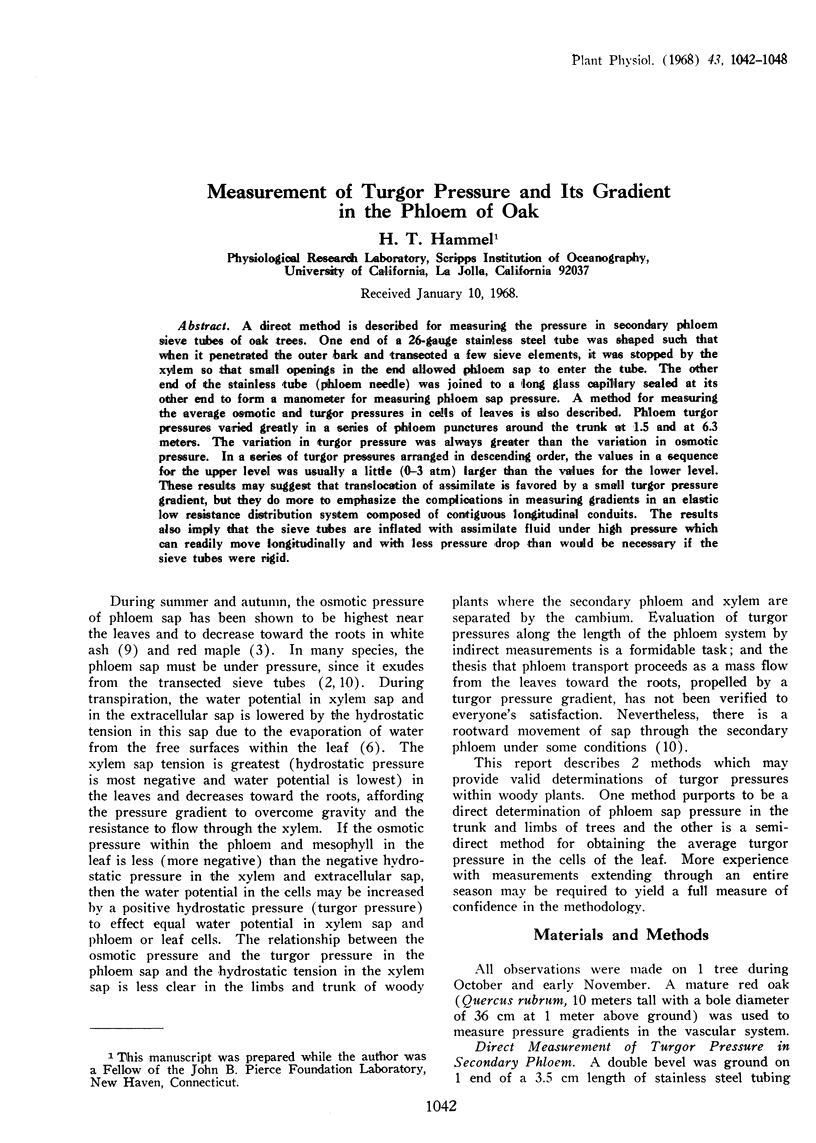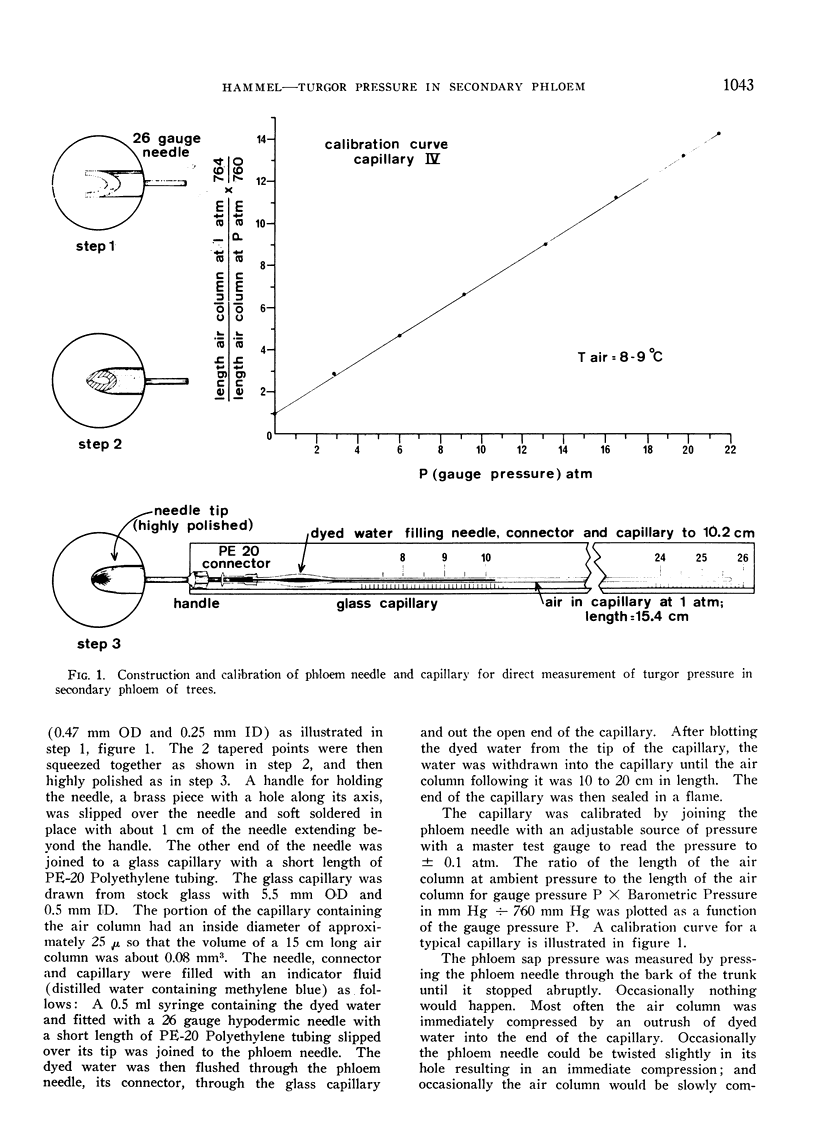Abstract
A direct method is described for measuring the pressure in secondary phloem sieve tubes of oak trees. One end of a 26-gauge stainless steel tube was shaped such that when it penetrated the outer bark and transected a few sieve elements, it was stopped by the xylem so that small openings in the end allowed phloem sap to enter the tube. The other end of the stainless tube (phloem needle) was joined to a long glass capillary sealed at its other end to form a manometer for measuring phloem sap pressure. A method for measuring the average osmotic and turgor pressures in cells of leaves is also described. Phloem turgor pressures varied greatly in a series of phloem punctures around the trunk at 1.5 and at 6.3 meters. The variation in turgor pressure was always greater than the variation in osmotic pressure. In a series of turgor pressures arranged in descending order, the values in a sequence for the upper level was usually a little (0-3 atm) larger than the values for the lower level. These results may suggest that translocation of assimilate is favored by a small turgor pressure gradient, but they do more to emphasize the complications in measuring gradients in an elastic low resistance distribution system composed of contiguous longitudinal conduits. The results also imply that the sieve tubes are inflated with assimilate fluid under high pressure which can readily move longitudinally and with less pressure drop than would be necessary if the sieve tubes were rigid.
Full text
PDF








